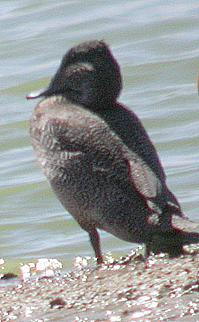Toolibin Lake
The lake is listed by the Australian Government as a threatened ecological community under the Environment Protection and Biodiversity Conservation Act 1999.It is about 300 hectares (740 acres) in area and 2 kilometres (1.2 mi) in diameter, has a maximum depth of 2 metres (6.6 ft), and is one of the last remaining inland freshwater lakes found in south-western Australia.Flooded gum, acorn banksia and rock sheoak woodland occur on the higher ground and deep sands surrounding the lake.Toolibin and its environs support more breeding waterbird species — up to 25, including the rare freckled duck, cormorants, egrets, night herons and spoonbills — than any other inland wetland in south-western Australia.[2] The main threats to Toolibin’s ecological community are salinisation and waterlogging due to clearing of the catchment for dry-land agriculture, particularly wool and cereal grain production; eutrophication caused by run-off containing agricultural fertilizers; invasive weeds changing the structure of the ecosystem and reducing natural vegetation available for food and shelter for animals; and grazing of regenerating seedlings by kangaroos, livestock and rabbits.

Western AustraliaWheatbeltPrimary inflowsPrimary outflowsCatchment areaRamsar Wetlandbrackish watersouth-western Australianature reserveShire of NarroginNarroginWheatbelt regionAustralian Governmentecological communityEnvironment Protection and Biodiversity Conservation Act 1999Blackwood Riverabove mean sea levelArthur RiverwoodlandRamsar Convention on Wetlandsswamp sheoakMelaleuca strobophyllaFlooded gumacorn banksiarock sheoakwaterbirdfreckled duckthreatenedred-tailed phascogaleclearinginvasivekangaroosrabbitscontour farmingRamsarDepartment of the EnvironmentRamsar sites in AustraliaAustralian Capital TerritoryGinini FlatsNew South WalesBlue LakeCentral Murray ForestsFivebough and Tuckerbil SwampsGwydir WetlandsHunter Estuary WetlandsLake PinarooLittle Llangothlin LagoonMacquarie MarshesMyall LakesNarran WetlandsParoo WetlandsTowra PointNorthern TerritoryCobourg PeninsulaKakadu National ParkQueenslandBowling Green BayCurrawinya LakesGreat Sandy StraitMoreton BayShoalwater BaySouth AustraliaBanrock Station Wetland ComplexBool and Hacks LagoonsCoongie LakesCoorong and Lakes Alexandrina and Albert WetlandPiccaninnie PondsRiverlandTasmaniaApsley MarshesInterlaken Lakeside ReserveJocks LagoonLaviniaLittle Waterhouse LakeLogan LagoonLower Ringarooma RiverMoulting LagoonPittwater–Orielton LagoonVictoriaBarmah ForestCorner InletEdithvale-Seaford WetlandsGippsland LakesGunbower ForestHattah-Kulkyne LakesKerang WetlandsLake AlbacutyaPort Phillip Bay and Bellarine PeninsulaWestern District LakesWestern Port BayBecher Point WetlandsEighty Mile BeachForrestdale and Thomsons LakesLake GoreLake Warden SystemLakes Argyle and KununurraMuir-Byenup SystemOrd River FloodplainPeel-Yalgorup SystemRoebuck BayVasse-Wonnerup SystemAshmore ReefCoral Sea ReservesThe Dales (Christmas Island)Elizabeth and Middleton ReefsHosnies Spring (Christmas Island)Pulu KeelingWetlandsBackswampBeach meadowBlackwater riverBofedalesBlanket bogCataract bogCoastal bogKermi bogPlateau bogPolygonal bogRaised bogString bogUpland bogCallowsAlder carrCiénegaClearwater riverCypress dome